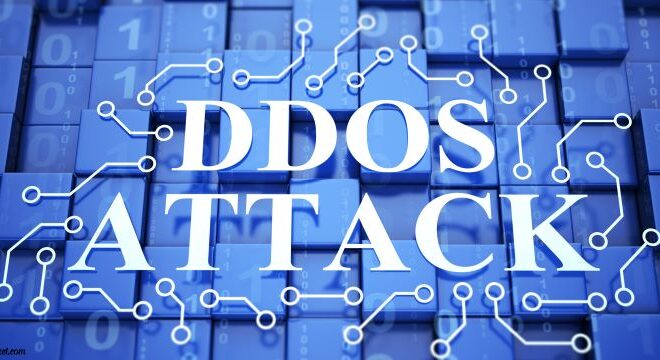
Enhancing Your Cybersecurity: Practical Tips for Businesses
Key Takeaways
- Understanding the importance of regular software updates.
- Best practices for creating strong passwords.
- How to recognize and mitigate phishing attempts.
- The importance of employee training in cybersecurity.
- Utilizing multi-factor authentication to enhance security.
Small companies can also become targets of cyber attacks, making them a concern for governments and large enterprises. Small firms are more susceptible to cyberattacks, partly because they may lack the resources necessary to defend themselves. Protecting your company from cyberattacks is crucial, but since cyberspace is constantly changing, it can be challenging to know where to begin. This article can help strengthen your company’s cybersecurity posture and fend against possible attacks.
Introduction
As the digital world changes, robust cybersecurity procedures are more critical than ever for companies of all sizes. From small startups to large corporations, protecting sensitive data and systems against cyber threats is paramount. According to experts, integrating cybersecurity compliance services can significantly enhance your company’s defense mechanisms.
Regular Software Updates: A Simple Yet Effective Measure
Keeping your software updated is one of the easiest and most efficient methods to defend against cyber-attacks. Software upgrades frequently include patches for security flaws that hackers may exploit. Without regular updates, your systems are left vulnerable to known threats that could easily be mitigated. Implementing a policy for regular updates can significantly reduce risk, ensuring that your systems are protected against the latest threats. According to Gartner, global software spending is expected to reach $126 billion in 2023, highlighting the ongoing investment in software development and security. This statistic underscores the importance of keeping software current to safeguard your business.
Creating Strong Passwords: The First Line of Defense
Passwords are often the first line of defense against unauthorized access. However, weak or easily guessable passwords can open the door to cyber threats. Creating strong, unique passwords for different accounts can prevent many attacks. Combining upper-case and lowercase letters, numbers, and special characters is essential. Avoid sharing personal information that adversaries, such as names or dates of birth, may easily guess. A password manager can be something to look at if workforce members need help remembering many complex passwords.
Steps to Create a Strong Password
- Use capital and lowercase letters, digits, and special characters to add intricacy.
- Avoid using easily guessable information such as birth dates, names, or common words.
- In the event of a data breach, switch out your passwords often to lower your chance of prolonged exposure.
- Consider using a passphrase instead of a single word to increase the difficulty of cracking passwords.
Recognizing and Mitigating Phishing Attempts
Phishing attacks are a standard method cybercriminals use to access sensitive information. Usually, emails used in these assaults are phishing attempts that seem to be from reliable sources. Training employees to recognize phishing emails can significantly reduce the risk of a successful attack. Some signs of phishing attempts include suspicious sender addresses, unexpected attachments, and urgent or threatening language. Being able to identify these red flags is crucial for safeguarding your business. Different online resources provide helpful guidelines for protecting against phishing, which can be an invaluable resource for your team.
Common Indicators of Phishing Emails
- Odd email addresses or domain names that don’t match the purported sender.
- Spelling and grammatical errors that indicate the email might be from something other than a legitimate source.
- Unexpected requests for personal or financial information, often with a sense of urgency.
- Unknown sources’ files or links might lead to phony websites that steal personal data or contain malware.
The Importance of Employee Training
Workers are frequently the cybersecurity system’s weakest link. Even if you have the most advanced security measures, a single mistake by an uninformed employee can compromise your entire system. Staff members may remain current on the newest risks and best practices by attending regular training sessions. Comprehensive training should cover various topics, including recognizing phishing attempts, using secure passwords, and following company security policies. Regular updates and refresher courses can ensure that employees remain vigilant and aware of evolving threats.
Key Training Topics
- Identifying phishing attempts by understanding common tactics used by cybercriminals.
- Secure password practices, including the importance of not reusing passwords and using password managers.
- Data protection policies that outline how to handle and protect sensitive information.
- Incident response procedures that teach employees what to do in case of a security breach.
Utilizing Multi-Factor Authentication
Accessing a resource requires using two or more verification methods, which is how multi-factor authentication (MFA) adds a layer of protection. It could consist of something you possess (like a smartphone), something you know (like a password), or something you are (like a fingerprint). MFA makes it far more difficult for unauthorized users to access critical systems and data by thwarting hackers even after getting login credentials. It’s an easy-to-use solution that works wonders in safeguarding confidential information. It’s straightforward to set up and works on a variety of platforms.
Benefits of Multi-Factor Authentication
- Enhanced security through multiple verification steps, reducing the likelihood of unauthorized access.
- Reduced risk of account breaches, even if passwords are compromised.
- Increased confidence in data protection, both for the business and its clients.
- It is a flexible solution that can be used with a wide range of data and systems, suiting companies of all sizes.
Conclusion
In today’s digital age, cybersecurity should be a top priority for every business. By implementing these practical tips—including regular software updates, strong passwords, employee training, and multi-factor authentication—companies can better protect themselves against ever-evolving cyber threats. Remember, the cybersecurity landscape constantly changes, and staying informed is critical to maintaining a robust security posture. These proactive steps help keep your business secure, strong, and prepared for challenges.



